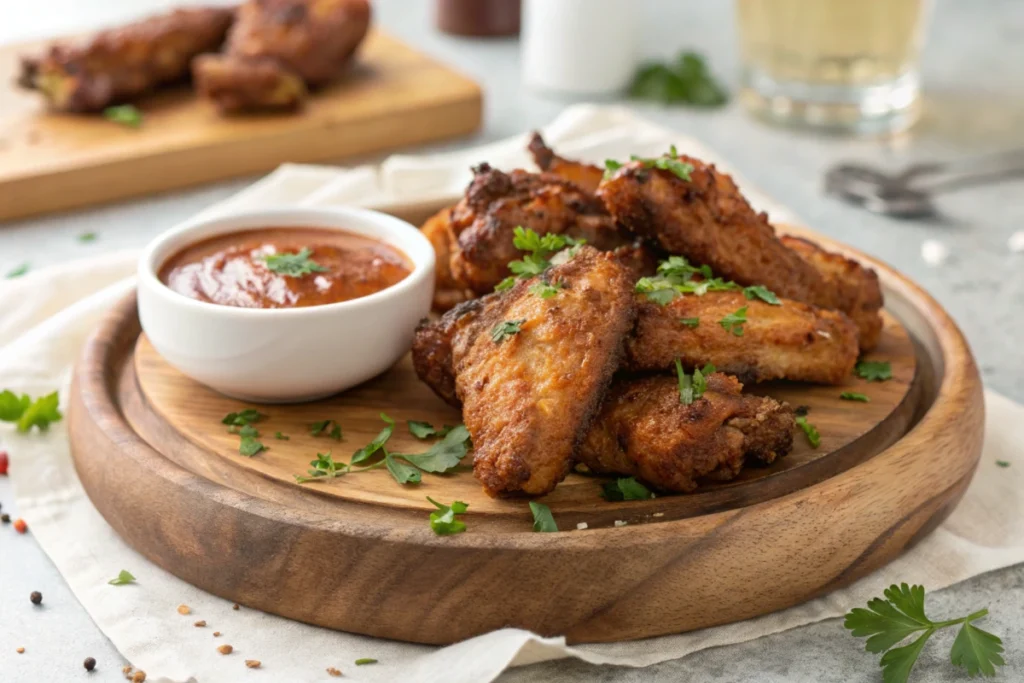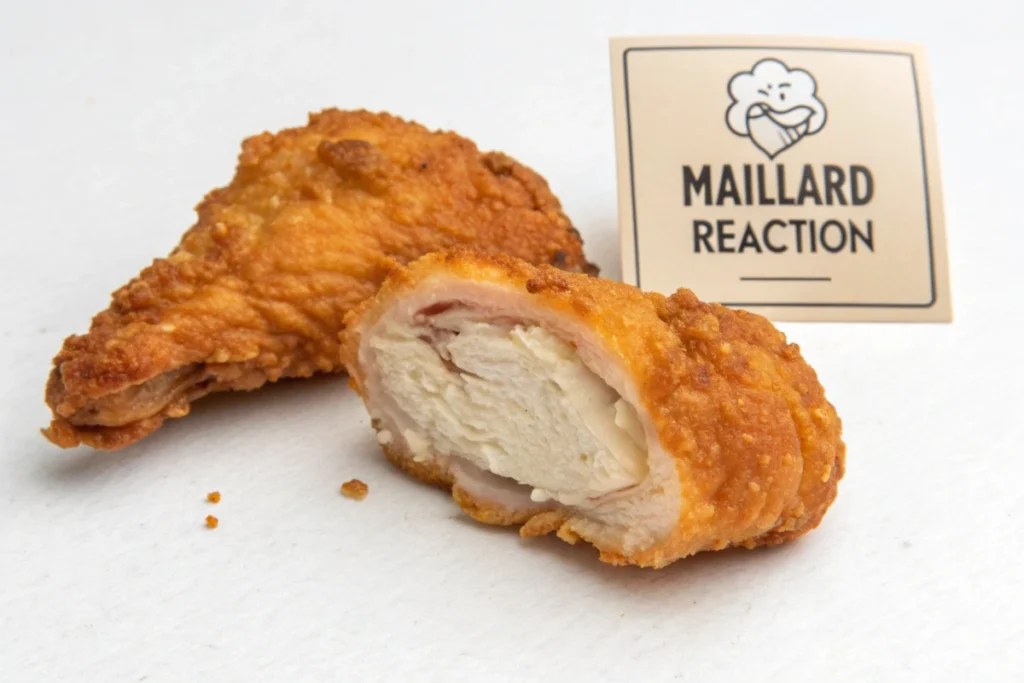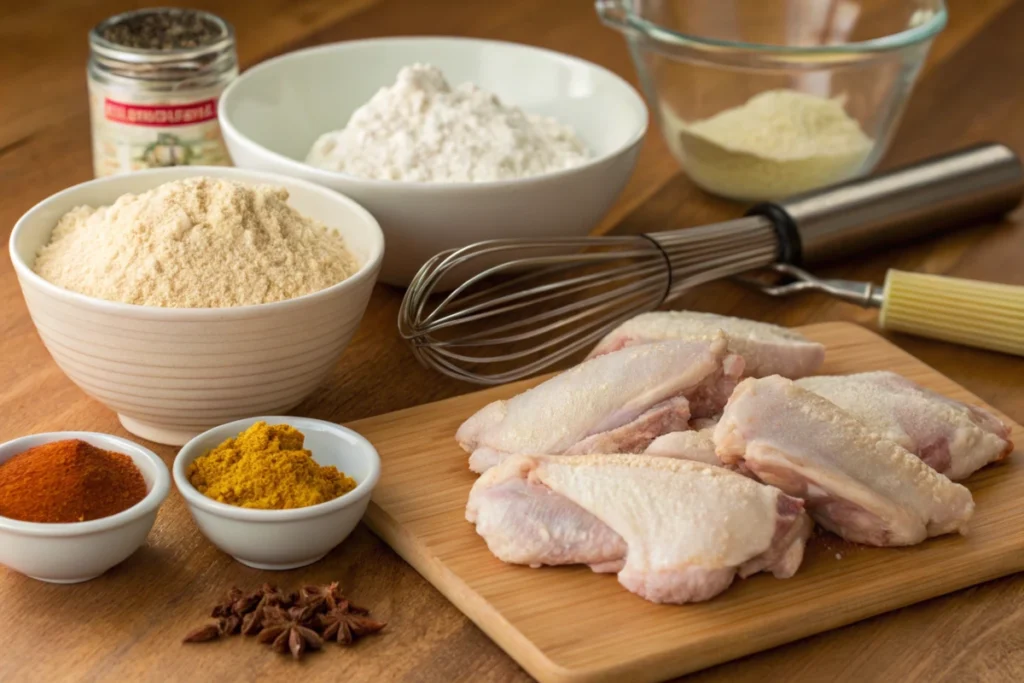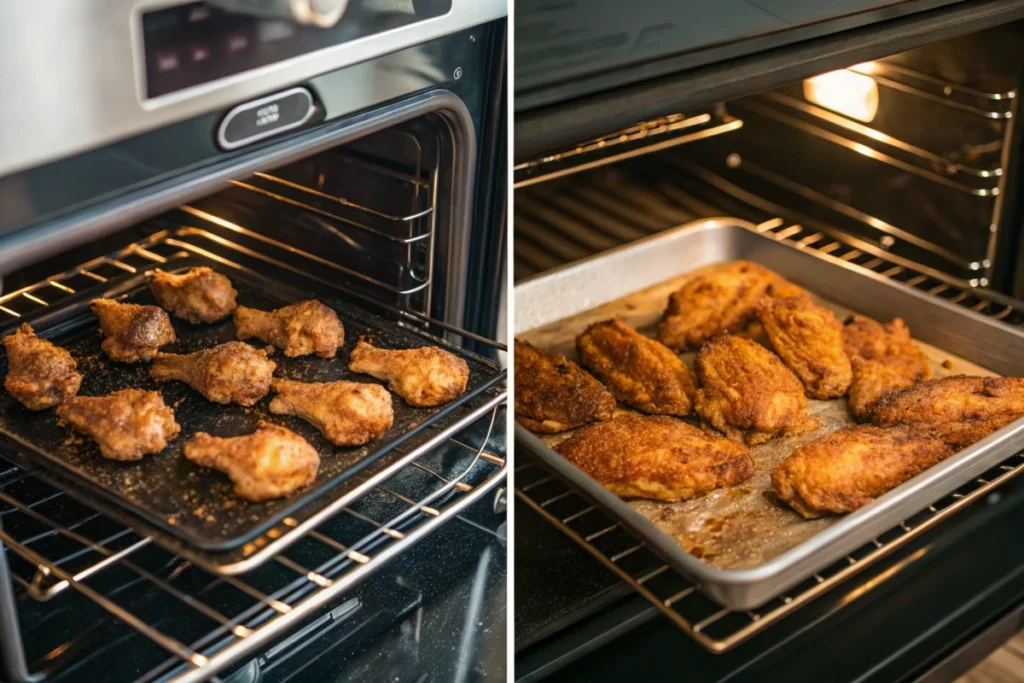
When it comes to finger foods, few dishes hold the universal appeal of crispy chicken wings. Whether served as a game-day snack, a party appetizer, or simply a savory treat, crispy wings are a beloved favorite. Their addictive crunch and juicy interior make them a culinary masterpiece. But have you ever wondered—what is the secret ingredient to crispy wings? Is it a special spice, a precise technique, or a hidden trick passed down through generations?
In this article, we’ll uncover the science behind crispiness, explore essential ingredients, and reveal proven techniques to achieve that golden, crunchy perfection. From frying tips to unexpected secret ingredients, this comprehensive guide has everything you need to transform ordinary wings into crispy delights.
Table of Contents
The Science Behind Crispy Wings

Crispy chicken wings are more than just a delightful treat; they’re a product of science in action. To achieve the perfect crunch, a deep understanding of the processes that govern texture and flavor is crucial. Let’s take a closer look at what makes wings irresistibly crispy.
Why Crispiness is Desirable in Food
Crispiness is a sensory experience that combines sound, texture, and taste. When you bite into a perfectly fried wing, the audible crunch signals freshness and quality. This texture contrasts beautifully with the juicy interior, creating a balance that is highly satisfying.
The Role of Moisture and the Maillard Reaction
Moisture plays a dual role in cooking chicken wings. While too much moisture in the skin can hinder crispiness, a controlled amount is necessary to create steam that contributes to the golden crust. Properly drying the wings before cooking helps eliminate excess moisture, which would otherwise cause sogginess.
The Maillard reaction, a chemical process that occurs when proteins and sugars are exposed to high heat, is central to achieving that signature golden-brown exterior. This reaction not only enhances the appearance but also amplifies the flavor, making your wings taste as good as they look.
How Batter or Coating Interacts with Frying Methods
The coating acts as a protective barrier between the chicken and the oil. It’s not just about aesthetics; the right blend of ingredients in the batter or coating creates a lattice structure that locks in juices and enhances crispiness. Whether you prefer a light dusting of cornstarch or a thick batter, the way the coating reacts to hot oil is key to the final texture.
Key Ingredients for Crispy Wings

No crispy wing recipe is complete without understanding the role of individual ingredients. While technique matters, the right components can make or break the dish.
The Importance of Flour and Cornstarch Blends
A perfect crispy wing often starts with the right dry mix. All-purpose flour is a common base, but adding cornstarch takes things to the next level. Cornstarch is lighter than flour and creates a more delicate, crackly crust. Many chefs recommend a blend of 50% flour and 50% cornstarch for optimal results.
The Role of Baking Powder
Baking powder might not seem like an obvious choice for a savory dish, but it works wonders for crispy wings. This leavening agent produces tiny air bubbles when heated, creating a light, airy crust. It also helps draw moisture out of the skin, ensuring maximum crunch.
Secret Spices and Marinades
Flavor is just as important as texture. While spices like garlic powder, paprika, and cayenne pepper are common, some recipes call for innovative ingredients like rice flour or potato starch to enhance crispiness. Marinades that include acidic components, such as buttermilk or vinegar, tenderize the meat while allowing the skin to crisp up beautifully.
Techniques to Perfect Crispy Wings

The secret ingredient might get all the attention, but flawless technique is just as important. Whether you’re frying, baking, or air frying, there are specific methods to follow that guarantee crispy results every time.
Frying Techniques for Ultimate Crispiness
Deep frying is the classic method for achieving crispy wings. However, not all frying is created equal. These key tips can help you perfect the process:
- Double Frying Method: This involves frying the wings twice—once at a lower temperature to cook them through and a second time at a higher temperature to crisp up the exterior. The first fry ensures the meat is juicy, while the second fry locks in the crunch.
- Ideal Oil Temperature: Maintaining a consistent oil temperature is crucial. A thermometer helps keep the temperature around 350°F (175°C) for the initial fry and 375°F (190°C) for the final fry. Oil that’s too cool leads to greasy wings, while oil that’s too hot can burn the coating.
Baking or Air Frying for a Healthier Option
For those looking to cut back on calories, baking or air frying offers an excellent alternative.
- Baking: To bake crispy wings, start by patting them dry and coating them with a baking powder mixture. Place them on a wire rack over a baking sheet, ensuring airflow around the wings. Bake at 400°F (200°C) for 45-50 minutes, flipping halfway through.
- Air Frying: Air fryers are increasingly popular for their ability to mimic the crispiness of deep frying without excessive oil. Preheat the air fryer to 375°F (190°C), arrange the wings in a single layer, and cook for about 20-25 minutes, shaking the basket halfway through.
Tips for Ensuring a Crisp Coat
Preparation is as important as the cooking method. Here are a few tips to ensure a crispy coating every time:
- Dry Your Wings: Removing surface moisture is essential. After rinsing, pat the wings dry with paper towels and let them sit uncovered in the refrigerator for an hour to dehydrate the skin slightly.
- Coating Methods and Timing: Toss wings in the flour-cornstarch mixture or baking powder just before cooking. Coating them too far in advance can result in a gummy texture.
Mistakes to Avoid
Even the best plans can be undone by common pitfalls. Avoid these mistakes to keep your wings on the crispy side of perfection.
Overcrowding the Pan
Whether frying or baking, overcrowding the pan is a recipe for disaster. Crowded wings trap steam, preventing them from crisping up. Fry wings in small batches or ensure enough space on the baking rack for even air circulation.
Using Too Much Batter
A thick, gloopy batter might seem like a good idea for extra crunch, but it often leads to uneven cooking. Stick to a light coating for the perfect balance of texture and flavor.
Inconsistent Oil Temperature
Temperature fluctuations can ruin even the most well-prepared wings. If the oil temperature drops too low, the wings absorb excess grease, becoming soggy. Use a thermometer to monitor and adjust the heat as needed.
FAQs: Common Questions About Crispy Wings
To ensure your wings come out perfect every time, it’s essential to address some frequently asked questions. These answers provide clarity on techniques, ingredients, and methods.
What’s the Best Oil for Frying Wings?
Neutral oils with a high smoke point, such as vegetable oil, peanut oil, or canola oil, are ideal for frying wings. These oils can withstand high temperatures without breaking down, ensuring a crisp and clean-tasting crust.
Can You Make Crispy Wings Without Frying?
Absolutely! Baking and air frying are excellent methods for achieving crispy wings without the extra oil. Both methods rely on high, even heat to mimic the texture of fried wings. Adding baking powder to the coating can further enhance crispiness.
How Long Should Wings Be Fried for Optimal Crispiness?
Fry the wings for about 8–10 minutes during the first fry to cook them through, and an additional 2–3 minutes during the second fry to crisp up the skin. Always monitor the internal temperature, which should reach 165°F (74°C).
Why Do Some Recipes Use Baking Soda Instead of Baking Powder?
Baking soda is a more potent leavening agent but lacks the additional components of baking powder that create a tender crust. It’s sometimes used in small quantities for an extra boost of crunchiness, though baking powder remains the preferred choice for many recipes.
What Are the Best Marinades for Crispy Wings?
Marinades that combine acidic elements like buttermilk, yogurt, or vinegar with spices tenderize the meat and add flavor without compromising the skin’s ability to crisp. Avoid overly wet marinades that leave excess moisture on the wings.
Can Frozen Wings Be Made Crispy?
Yes, but extra steps are required. Thaw frozen wings completely and pat them dry to remove as much moisture as possible. This step is crucial for achieving a crispy exterior during cooking.
Conclusion
Achieving the perfect crispy wings isn’t just about using one secret ingredient—it’s a combination of technique, preparation, and a thoughtful selection of ingredients. From blending cornstarch with flour to using baking powder for that extra crunch, every detail contributes to the final masterpiece.
Whether you’re frying, baking, or air frying, remember to dry your wings, avoid overcrowding, and maintain consistent temperatures. With these tips and tricks, you’ll transform your chicken wings into a dish that’s not only crispy but irresistibly delicious.
So, what’s stopping you? Gather your ingredients, try these methods, and discover the magic of crispy wings for yourself. Don’t forget to share your tips and creations with fellow food lovers!
